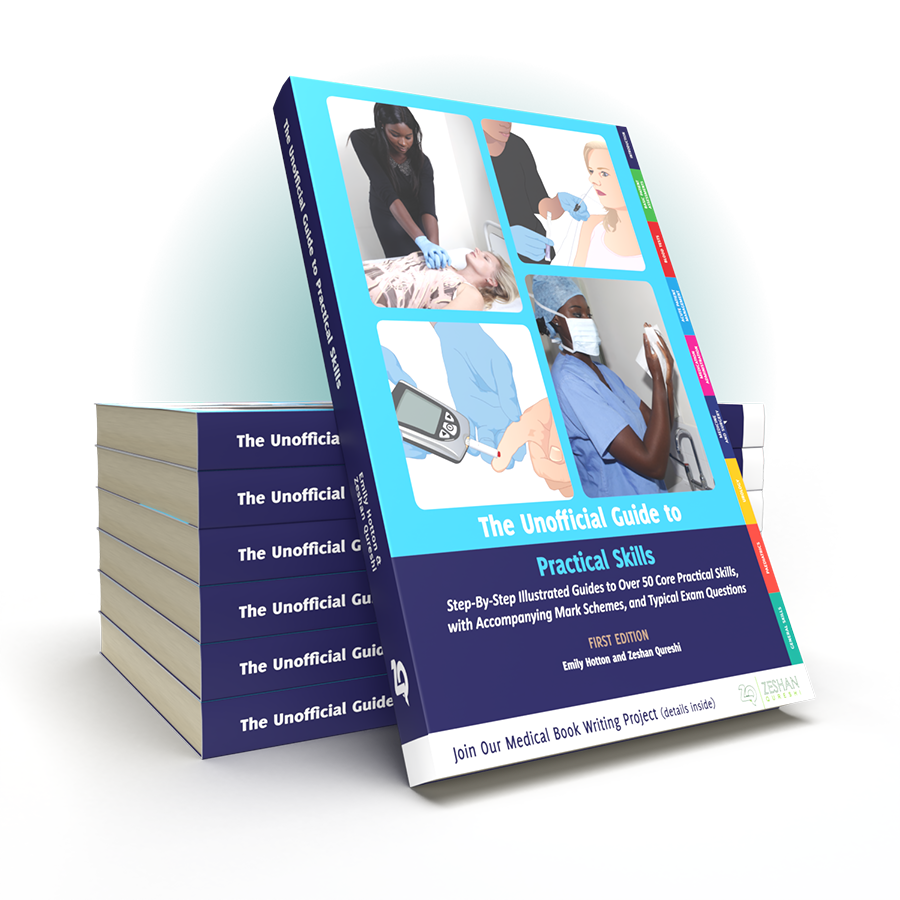This book covers the core clinical competencies for new graduates, as well as additional practical procedures that are expected to be performed by junior doctors. Written by recently qualified foundation doctors, with review by senior clinicians, we have ensured that all procedures follow current guidelines.
There are detailed explanations of over 50 practical skills stations. Each station includes a corresponding mark scheme, associated questions and answers as well as further areas to explore.
The aim is to give you a comprehensive overview of all procedures, even if you have yet to witness them in your training. Covering both basic and more advanced practical skills, we hope this book will prove to be a handy study companion for your undergraduate and postgraduate training.
Key Features
Written in line with the other books in the series, stations contain:
Do you want to save time learning and perfecting your practical skills? To massively improve your confidence on the ward? And impress your patients and your seniors by knowing exactly what to do for each procedure, straight away, every time?
The Unofficial Guide to Practical Skills is a step-by-step guide for junior doctors that will teach you, will guide you through, and will give you unprecedented confidence in the Core Practical Skills required to excel in medicine.

Emily Hotton
Co-Editor
Junior Doctor
This book has been created for you. We aim to ease the stress of studying and assist in making learning enjoyable to help you become a better clinician.
The book is split into eight chapters, following a logical order from simple procedures to those that are more challenging. Each practical skill station has a method outlining how to perform the skill as well as detailed objectives, general advice and facts dispersed throughout. This is followed by a matched mark scheme and a series of questions. This format allows for individual study or group work. There are three roles that may be adopted: the patient; the examiner and the candidate. The roles of the patient and examiner can be combined if working in pairs. Scenarios are real life instructions that would be found in OSCEs or on the wards. Take your time to read the passage and note any salient points.
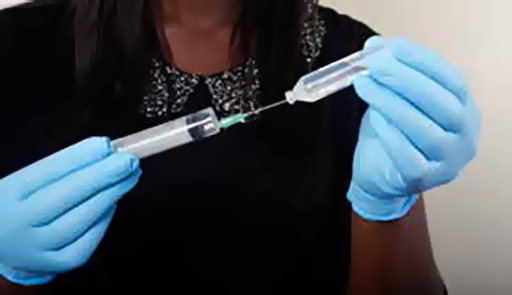
Cannulae are sized by gauge (smaller the number = bigger the size), all with corresponding colours. Bigger cannulae can achieve higher flow rates. For administering IV medication and IV maintenance fluids, smaller cannulae (pink/blue) are fine. In an emergency, a large cannula is preferred (green or bigger) since this permits more rapid administration of medications and fluids.
Patient comfort is very important in considering where to place the cannula, particularly in non emergency situations. Put it in the left arm if they are right handed, use a small cannula if that is all that might be needed, and remember that although the antecubital fossa is tempting, placing a cannula here makes moving the arm more difficult.
Introductions and General Advice |
||||
| Introduces self (cleans hands) | □ | □ | □ | □ |
| Identifies patient (3 points of ID) | □ | □ | □ | □ |
| Explains procedure, identifies concerns and obtains consent | □ | □ | □ | □ |
| Checks for allergies and arm preference | □ | □ | □ | □ |
Preparation |
||||
| Obtains equipment and checks expiry dates | □ | □ | □ | □ |
| Washes hands and puts on gloves | □ | □ | □ | □ |
| Assembles equipment | □ | □ | □ | □ |
Preparation of IV Flush |
||||
| Draws up saline flush using NTT | □ | □ | □ | □ |
| Safely stows syringe in tray | □ | □ | □ | □ |
Cannulation |
||||
| Positions arm appropriately | □ | □ | □ | □ |
| Applies tourniquet, selects vein, loosens tourniquet | □ | □ | □ | □ |
| Washes hands | □ | □ | □ | □ |
| Puts on non sterile gloves and single use apron | □ | □ | □ | □ |
| Cleans puncture site (30 seconds) and allows to air dry | □ | □ | □ | □ |
| Reapplies tourniquet | □ | □ | □ | □ |
| Appropriate insertion technique | □ | □ | □ | □ |
| Removes tourniquet | □ | □ | □ | □ |
| Removes needle (whilst occluding vein) and immediately disposes of sharp safely | □ | □ | □ | □ |
| Attaches cap and cleans any leakage of blood | □ | □ | □ | □ |
| Applies sterile dressing with date and time | □ | □ | □ | □ |
“A cannula is a small plastic tube that remains in your vein allowing you to receive fluid and medication. It is inserted using a needle, a bit like having a blood test.You will feel a sharp scratch but the needle is removed once the plastic tube is in place. It is held in place with a sticky dressing.
The cannula will be changed every three days if you need it for a longer period of time. It may take a few attempts to ensure the plastic tube is in the correct place.”
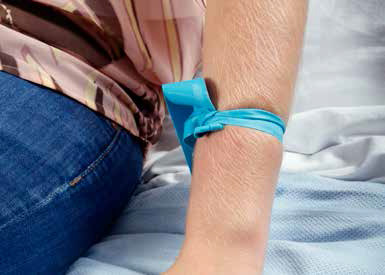
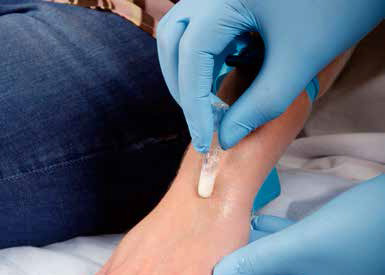
Clean insertion site
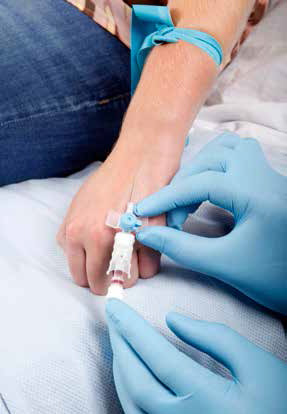
Enter Skin
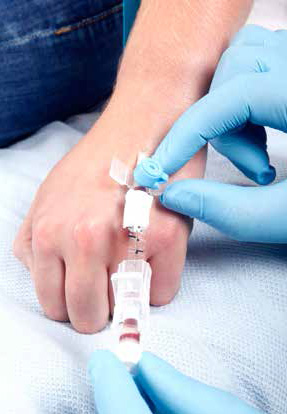
Push down on the vein whilst withdrawing the stylet to prevent blood leakage
What cannula would you use for a blood transfusion?
If it was a scheduled blood transfusion, a pink (20G) cannula would be sufficient, but a green cannula (22G) is recommended. If it were an emergency, a larger cannula would be preferred.
What factor is the most critical determinant of flow rate through a cannula?
What are the complications of IV cannulation?
In an emergency, if you cannot gain IV access, what other routes are acceptable for drug delivery?
When might you remove a cannula?
What should you advise a patient to watch out for if they have a cannula?
Contact Us
Are you a medical trainee, a student, a doctor or medical professional?
We’d love to hear from you for feedback or if you would like to contribute towards the Unoffical Guide to Medicine series.
